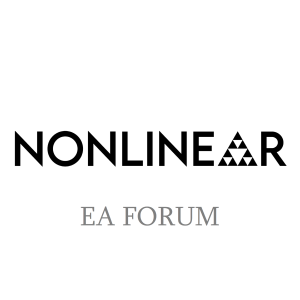
The Nonlinear Library: EA Forum
Education

Welcome to The Nonlinear Library, where we use Text-to-Speech software to convert the best writing from the Rationalist and EA communities into audio. This is: Why are we not using upper-room ultraviolet germicidal irradiation (UVGI) more?, published by Max Görlitz on March 12, 2024 on The Effective Altruism Forum.This is aDraft Amnesty Week draft. It may not be polished, up to my usual standards, fully thought through, or fully fact-checked.Commenting and feedback guidelines:Keep one and delete the rest (or write your own):I'm posting this to get it out there. I'd love to see comments that take the ideas forward, but criticism of my argument won't be as useful at this time.Please be aware that I wrote all of this in November 2022 and haven't engaged with the draft since. I have learnt much more about germicidal ultraviolet since and probably don't agree with some of the takes here anymore. I am posting it to get it out there instead of having it lying around in some Google doc forever.I am currently operating under the hypothesis that upper-room UVGI systems are efficacious, safe, and cost-effective for reducing the transmission of airborne diseases (E. A. Nardell 2021; E. Nardell et al. 2008; Abboushi et al. 2022; Shen et al. 2021). We have known about them since the 1940s. I was interested in digging into the history of research on upper-room UVGI to answer the question: If we have known for so long how well upper-room UVGI works, why are we not using it much more widely?SummaryThe points below are largely bad reasons not to use upper-room UVGI, which leads me to suspect that upper-room UVGI is underrated and that we should probably be implementing it more.Upper-room UVGI is an 80-year-old technology.The first epidemiological studies in the 1940s were very promising but attempts to replicate them were much less successful.The studies which did not show an effect likely had important design flaws.Around the same time that the epidemiological studies showing limited effects were published, other measures for combating tuberculosis were invented. Thus, upper-room UVGI became less of a priority.People were concerned about the safety of UVC light. These concerns are mostly unjustified today, but many people are still worried and extremely reluctant to implement upper-room UVGI.While some guidelines exist, there are no government standards for upper-room UVGI. The regulatory environment in the US is a mess, leaving manufacturers and consumers with a difficult market.The medical establishment has been overly skeptical of airborne disease transmission in the 20th century and partly until today. Technologies for combating airborne disease transmission were therefore overlooked.Early epidemiological studiesInitial studies on the effectiveness of upper-room UVGI and UVGI "light barriers" in the 1940s showed great promise (Sauer, Minsk, and Rosenstern 1942; Wells, Wells, and Wilder 1942). For instance, in the Wells trial during the 1941 Pennsylvania measles epidemic, 60% fewer susceptible children were infected in the classrooms with upper-room UVGI (seeAppendix 2 for an extensive spreadsheet).These promising results prompted further epidemiological studies in the 1940s and 50s, but those did not show a significant effect, and people felt disillusioned with the technology (Reed 2010).Kowalski, one of the leaders in modern UVGI research, claims that the MRC study (1954) played an essential role in the declining interest in upper-room UVGI (Kowalski 2009, 11). That study concluded: "There was no appreciable effect on the total sickness absence recorded in either the Infant or the Junior departments.[...] The effect of irradiation on total sickness absence is therefore small, and the results would not appear to justify wide use of irradiation as a hygienic measure for the control of infection in primary urban day schools." (Medical Research Council (Great Britain) 1954).One problem with the study was that while u...
More Episodes
EA - Unpacking Martin Sandbu's recent(ish) take on EA by JWS
 2024-01-20
2024-01-20
EA - Good job opportunities for helping with the most important century by Holden Karnofsky
 2024-01-18
2024-01-18
EA - CEA is spinning out of Effective Ventures by Eli Nathan
 2024-01-18
2024-01-18
EA - Forecasting accidentally-caused pandemics by JoshuaBlake
 2024-01-18
2024-01-18
EA - Some heuristics I use for deciding how much I trust scientific results by Nathan Barnard
 2024-01-18
2024-01-18
EA - Against Learning From Dramatic Events by bern
 2024-01-18
2024-01-18
EA - First book focusing on EA and Farmed Animals: The Farm Animal Movement: Effective Altruism, Venture Philanthropy, and the Fight to End Factory Farming in America by Jeff Thomas
 2024-01-18
2024-01-18
EA - Report on the Desirability of Science Given New Biotech Risks by Matt Clancy
 2024-01-17
2024-01-17
EA - EA Infrastructure Fund Ask Us Anything (January 2024) by Tom Barnes
 2024-01-17
2024-01-17
EA - EA Nigeria: Reflecting on 2023 and Looking Ahead to 2024 by EA Nigeria
 2024-01-16
2024-01-16
EA - Giving Farm Animals a Name and a Face: The Power of The Identifiable Victim Effect by Rakefet Cohen Ben-Arye
 2024-01-16
2024-01-16
EA - Meta Charity Funders: Summary of Our First Grant Round and Path Forward by Joey
 2024-01-16
2024-01-16
EA - Various roles at The School for Moral Ambition by tobytrem
 2024-01-15
2024-01-15
EA - AI doing philosophy = AI generating hands? by Wei Dai
 2024-01-15
2024-01-15
EA - EAGxAustin Save the Date by Ivy Mazzola
 2024-01-13
2024-01-13
EA - Cause-Generality Is Hard If Some Causes Have Higher ROI by Ben West
 2024-01-12
2024-01-12
EA - Help the UN design global governance structures for AI by Joanna (Asia) Wiaterek
 2024-01-12
2024-01-12
EA - GiveWell from A to Z by GiveWell
 2024-01-12
2024-01-12
EA - CE will donate £1K if you refer our next Outreach Director by CE
 2024-01-12
2024-01-12
EA - Social science research on animal welfare we'd like to see by Martin Gould
 2024-01-12
2024-01-12
Create your
podcast in
minutes
- Full-featured podcast site
- Unlimited storage and bandwidth
- Comprehensive podcast stats
- Distribute to Apple Podcasts, Spotify, and more
- Make money with your podcast
It is Free
You may also like

Mayo Clinic Talks


The Saad Truth with Dr. Saad


Positive Thinking Mind


The Jordan B. Peterson Podcast


The Mel Robbins Podcast


- Privacy Policy
- Cookie Policy
- Terms of Use
- Consent Preferences
- Copyright © 2015-2024 Podbean.com


 iOS
iOS Android
Android